
The Battle of Saint-Mihiel was a major World War I battle fought from 12–15 September 1918, involving the American Expeditionary Forces (AEF) and 110,000 French troops under the command of General John J. Pershing of the United States against German positions. The U.S. Army Air Service played a significant role in this action.
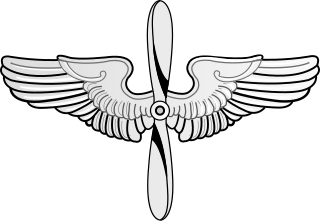
The United States Army Air Service (USAAS) was the aerial warfare service component of the United States Army between 1918 and 1926 and a forerunner of the United States Air Force. It was established as an independent but temporary branch of the U.S. War Department during World War I by two executive orders of President Woodrow Wilson: on May 24, 1918, replacing the Aviation Section, Signal Corps as the nation's air force; and March 19, 1919, establishing a military Director of Air Service to control all aviation activities. Its life was extended for another year in July 1919, during which time Congress passed the legislation necessary to make it a permanent establishment. The National Defense Act of 1920 assigned the Air Service the status of "combatant arm of the line" of the United States Army with a major general in command.

The 27th Aero Squadron was a United States Army Air Service unit that fought on the Western Front during World War I.
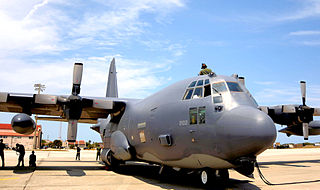
The 102nd Rescue Squadron is a unit of the New York Air National Guard 106th Rescue Wing stationed at Francis S. Gabreski Air National Guard Base, Westhampton Beach, New York. The 102nd is equipped with the HC-130J Combat King II transport aircraft.
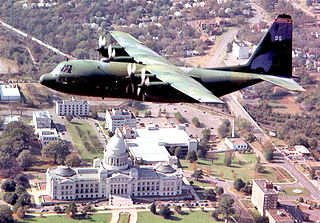
The 154th Training Squadron is a unit of the Arkansas Air National Guard 189th Airlift Wing. It is assigned to Little Rock Air Force Base, Arkansas and is equipped with the C-130H Hercules aircraft.

The Tank Corps of the American Expeditionary Forces was the mechanized unit that engaged in tank warfare for the American Expeditionary Forces (AEF) on the Western Front during World War I.

The 41st Electronic Combat Squadron is a United States Air Force unit. Its current assignment is with the 55th Electronic Combat Group at Davis–Monthan Air Force Base, Arizona as a geographically separated unit from its parent wing, the 55th Wing at Offutt Air Force Base, Nebraska. It operates the Lockheed EC-130H Compass Call communications-jamming aircraft.

The 49th Aero Squadron was a United States Army Air Service unit that fought on the Western Front during World War I.

The 24th Aero Squadron was a United States Army Air Service unit that fought on the Western Front during World War I.
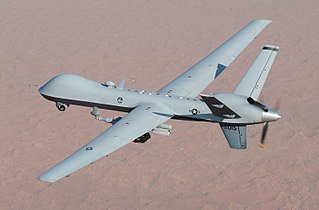
The 50th Attack Squadron is a squadron of the United States Air Force, stationed at Shaw Air Force Base, South Carolina, where it operates the General Atomics MQ-9 Reaper unmanned aerial vehicle. It is assigned to the 25th Attack Group, also at Shaw, and is a component of the 432d Wing, located at Creech Air Force Base, Nevada.

The 135th Aero Squadron was a United States Army Air Service unit that fought on the Western Front during World War I.

The 22nd Aero Squadron was a United States Army Air Service unit that fought on the Western Front during World War I.

The Organization of the Air Service of the American Expeditionary Force on 11 November 1918, represents its maximum strength in World War I. Units of the Air Service are listed as assigned to the order of battle for that date, which was that of the Armistice with Germany. The first air unit arrived in France in September 1917, while the final air unit reaching the front did so on 9 November 1918. Unit operations began in April 1918. At the armistice, 57,508 officers and men served in the Air Service of the AEF, 24,512 in the Zone of Advance, and 32,996 in the Services of Supply. Of its 6,861 officers, 4,088 were on flying status and 219 were qualified observation balloon aviators. 1,724 of those on flying status and approximately 100 of the balloonists served in combat units.

The 21st Airship Group was a unit of the United States Army Air Corps. It was last assigned to the 3d Wing at Scott Field, Illinois. It was originally activated under a different name in 1921, and disbanded on 27 May 1939.
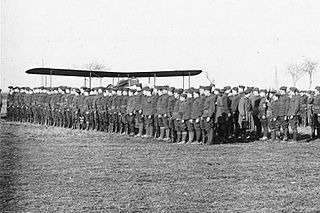
The 85th Aero Squadron was an Air Service, United States Army unit that fought on the Western Front during World War I.
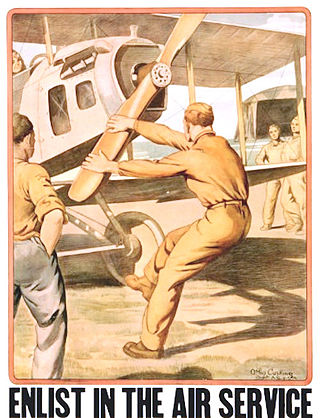
With the purchase of its first airplane, built and successfully flown by Orville and Wilbur Wright, in 1909 the United States Army began the training of flight personnel. This article describes the training provided in those early years, though World War I, and the immediate years after the war until the establishment of the United States Army Air Corps Flight Training Center in San Antonio, Texas during 1926.

The 168th Aero Squadron was a United States Army Air Service unit that fought on the Western Front during World War I.

The 278th Aero Squadron was a United States Army Air Service unit that fought on the Western Front during World War I.

The 2nd Special Operations Squadron is an Air Force Reserve Command unit, assigned to the 919th Operations Group. Stationed at Hurlburt Field, Florida, the unit operates General Atomics MQ-9 Reaper remotely piloted vehicles.






















